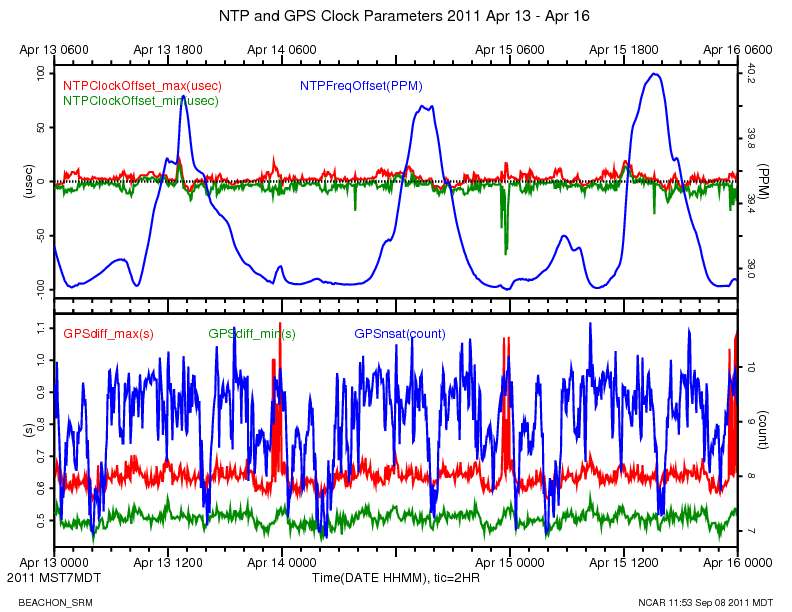The turbulence tower data system (aka, the DSM) uses a GPS receiver and the NTP (Network Time Protocol) software to set its clock, which, in addition to the normal uses of the system clock, is used to time-tag the data samples.
...
After installing 18x-LVC, the NTPClockOffset is in a much smaller range, from -10 to 25 microseconds:
GPSdiff is also much better behaved, ranging from a minimum of 0.5 to 1.1 seconds. The number of satellites tracked by the new GPS is also generally higher.
The periodic spikes in GPSdiff_max up to 1 second that occur at 23:00 local time and last about an hour, are simultaneous with the network transfer of the day's data files from the DSM to the RAL server. These indicate increased sampling latency is happening at these times, which needs to be investigated and improved.
As expected, the frequency offset shows a temperature dependence in the system clock oscillator. We do not have a measurement of the temperature inside the data system. The top panel in the plot below shows a time series of the 2 meter ambient air temperature on the tower, with the NTPFreqOffset, for a cool 3 day period in April. When the ambient air temperatures is below 5 deg C, the system clock oscillator does not show a pronounced temperature effect. The bottom panel shows a close relationship between the NTPClockOffset and the derivative of NTPFreqOffset, indicating how NTP adjusts the clock.
...
